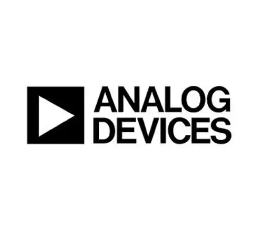**ADE7752AR: A Comprehensive Analysis of its Energy Metering Architecture and Application Circuits**
The **ADE7752AR** from Analog Devices represents a cornerstone technology in the field of precision energy measurement. This highly integrated, CMOS circuit is specifically engineered for **accurate electrical energy metering** in a wide array of applications, from single-phase residential meters to industrial monitoring systems. Its architecture combines sophisticated analog and digital signal processing to deliver performance and reliability that have made it an industry standard.
**Architectural Overview and Core Functionality**
At its heart, the ADE7752AR is built around two high-resolution sigma-delta (Σ-Δ) Analog-to-Digital Converters (ADCs). These ADCs digitize the voltage and current signals from the power line, typically sensed via a voltage divider and a current transducer such as a **current transformer (CT) or shunt resistor**.
The device's brilliance lies in its dedicated digital signal processing core. The digitized voltage and current samples are multiplied together, continuously calculating the instantaneous power. This real-time power calculation is then integrated over time to determine the **active (real) energy consumption**, which is the fundamental metric for utility billing. This process is largely immune to noise and component tolerance variations, ensuring high accuracy across diverse environmental conditions.
A key architectural feature is its **on-chip frequency reference**, which generates a output pulse (F1 and F2) whose frequency is directly proportional to the active power. This high-frequency output (F1) is suitable for calibration and testing, while the lower-frequency output (F2) drives a mechanical counter or stepper motor, acting as the energy register in an electromechanical meter. Additionally, the chip provides a pulse output with a programmable frequency (CF) for simpler microcontroller interfacing in electronic designs.
**Critical Application Circuits**

Implementing the ADE7752AR effectively requires careful design of its surrounding application circuit.
1. **Sensor Interface:** The front-end design is paramount. For current sensing, a CT provides isolation and is ideal for high-current applications, while a shunt resistor offers a more cost-effective solution for lower currents. Proper filtering and biasing at the ADC inputs are crucial to reject high-frequency noise and ensure the signals remain within the specified input range of the device.
2. **Power Supply and Reference:** A stable, low-noise power supply is essential for achieving specified accuracy. The ADE7752AR often operates from a single +5V supply. The on-chip voltage reference (2.5 V ± 8%) is critical for ADC conversion accuracy; thus, proper decoupling at the REF IN/OUT pin is mandatory.
3. **Calibration Circuitry:** Meter calibration is achieved by adjusting the power gain and, if necessary, the phase between the voltage and current channels. This is typically done by writing to the on-chip calibration registers via the serial interface. In practice, this involves using **digital potentiometers or switches** controlled by a microcontroller to set the correct calibration coefficients during production testing.
4. **Metrology Processor Interface:** In more advanced electronic meters, the ADE7752AR acts as a metrology engine. Its serial interface (SPI-compatible) allows an external microcontroller to read the energy registers, voltage RMS, and current RMS values. This enables the creation of smart meters with display drivers, communication modules (e.g., PLC, RF), and advanced functionalities like tamper detection.
**Advantages in Design**
The integration of the ADE7752AR simplifies meter design significantly. It reduces the component count from dozens of discrete parts to a single chip and a handful of external passive components. This leads to enhanced reliability, reduced board space, lower overall cost, and simplified production calibration. Its high accuracy over a dynamic range of 1000:1 ensures precise measurement from light loads to full load, meeting international metering standards such as IEC 62053-21.
ICGOODFIND: The ADE7752AR stands as a testament to the successful integration of analog precision and digital processing. Its robust architecture, centered on high-resolution Σ-Δ ADCs and dedicated DSP for active energy calculation, provides a reliable and accurate foundation for energy metering. The well-defined application circuits for sensor interfacing, calibration, and processor communication have enabled its widespread adoption, making it a fundamental component in the evolution of modern electricity meters.
**Keywords:** Active Energy Metering, Sigma-Delta ADC, Current Transformer (CT), Calibration, Metrology Integrated Circuit
